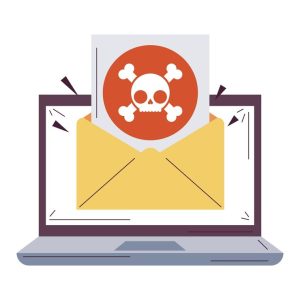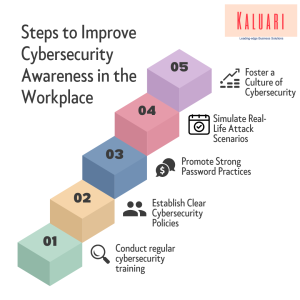Introduction
Cybersecurity is crucial for small and medium-sized businesses (SMBs), but implementing robust security measures can seem daunting, especially with limited resources. However, securing your network doesn’t have to break the bank. In this guide, we’ll outline practical and affordable cybersecurity strategies to help you protect your business from cyber threats.
Related: 10 Cybersecurity Best Practices Every Business Should Implement
1. Conduct a Cybersecurity Risk Assessment
Before implementing any measures, it’s essential to understand where your business is vulnerable. You can find a free downloadable cybersecurity checklist here. Conducting a risk assessment will help you identify:
- The type of data you handle (customer data, financial information, etc.)
- Potential vulnerabilities in your network (outdated software, weak passwords)
- Threats specific to your industry
- Security gaps that need addressing
Key Steps:
- List all assets (hardware, software, data).
- Identify risks (phishing, malware, data breaches).
- Prioritize based on the likelihood and impact of these risks.
2. Use Strong Passwords and Enable Multi-Factor Authentication (MFA)
Weak passwords are one of the easiest ways for cybercriminals to access your systems. Enforce strong password policies across your organization and implement multi-factor authentication (MFA) to add an extra layer of security.
Best Practices:
- Use password managers to generate and store complex passwords.
- Enforce password changes every 3-6 months.
- Implement MFA on all critical systems, including email and business applications.
3. Regular Software Updates and Patch Management
Hackers often exploit outdated software to gain access to networks. Ensure that all software, operating systems, and plugins are regularly updated.
Steps to Follow:
- Enable automatic updates on all software.
- Regularly check for security patches for any specialized software.
- Maintain an inventory of software to ensure updates are applied to all systems.
4. Educate Employees on Cybersecurity Best Practices
Your employees are your first line of defense. Many cyberattacks, such as phishing, target human error. Educating your team on cybersecurity awareness basics can prevent common threats.
Training Topics:
- How to identify phishing emails
- The importance of secure file sharing
- Safe browsing habits
- Reporting suspicious activities
5. Invest in Basic Anti-Malware and Firewall Solutions
Essential security tools such as firewalls and anti-malware software are critical for protecting your network from threats.
Affordable Options:
- Use free or low-cost antivirus software such as Avast or Bitdefender for small teams.
- Implement a software-based firewall for essential network protection.
- For enhanced protection, consider Unified Threat Management (UTM) systems, which combine firewalls, VPNs, and intrusion detection in one package.
6. Secure Wi-Fi Networks
Unsecured Wi-Fi networks can be a gateway for hackers. Ensure that your business’s Wi-Fi is encrypted and hidden.
Steps to Secure Wi-Fi:
- Use WPA3 encryption for the highest security.
- Disable the SSID broadcast to hide your network from unauthorized users.
- Create separate networks for employees and guests.
7. Backup Data Regularly
Regular data backups ensure you can recover quickly in case of a ransomware attack or data breach. This can be done inexpensively using cloud-based services.
Cost-Effective Solutions:
- Use cloud services like M@ilsafi, Google Drive, Microsoft OneDrive, or Dropbox for automatic data backups.
- Follow the 3-2-1 rule: Keep three copies of your data in two different formats, with one copy stored off-site or in the cloud.
8. Use Encryption for Sensitive Data
Data encryption is an essential cybersecurity measure that ensures that even if data is stolen, it cannot be read without the decryption key.
Simple Steps:
- Enable full-disk encryption on all company devices (it is available in most operating systems, such as Windows BitLocker or macOS FileVault).
- Encryption tools such as VeraCrypt are used to secure sensitive files and emails.
9. Monitor and Audit Network Activity
Regular monitoring of network activity can help you detect suspicious behavior early.
Inexpensive Solutions:
- Use free tools like Wireshark for essential network monitoring.
- Set up logs to track user activity and access to sensitive information.
10. Partner with an Affordable Managed Security Service Provider (MSSP)
If managing your cybersecurity in-house is too challenging, consider partnering with a managed security service provider (MSSP). These services offer affordable cybersecurity solutions tailored to small businesses.
Benefits:
- 24/7 monitoring and threat detection
- Regular vulnerability assessments
- Incident response support
Look for MSSPs that offer tiered pricing models based on the size of your business.
Read Also: The Evolution of Cyber Threats: Trends and Predictions for 2024
Conclusion
Implementing effective cybersecurity measures doesn’t have to be expensive. Small businesses can significantly enhance their security posture by focusing on critical areas such as employee training, strong password policies, data backups, and using cost-effective tools. Prioritize the steps that address your business’s unique vulnerabilities and budget constraints to create a safer online environment.
For more detailed advice on securing your small business, download this PDF guide for easy reference and actionable insights.





Pingback: What is Ransomware?
Pingback: What is Cyber Hygiene? Best Practices for Your Employees